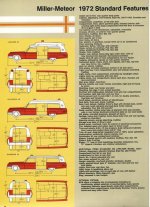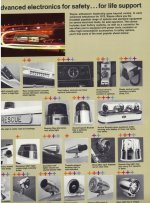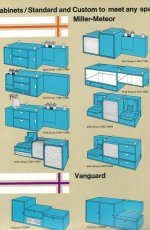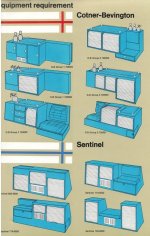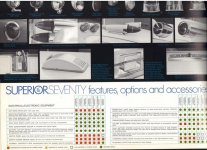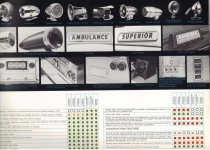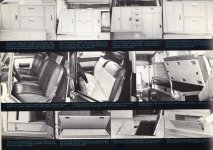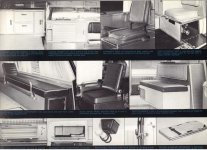I don't want to hijack the Classy Cadillacs thread, but did have a follow up to this, I think worthy of its own discussion.

I don't know much about what it was like to have been on the ordering side of buying a new professional car, since I wasn't even of driving age until the 1990's and there doesn't seem to be a lot of articles on the subject. Can you enlighten us on what coachbuilder "options" are? I always thought that most professional car manufacturers didn't really have a base model you added to, but rather each coach was a bespoke build. Almost as if you would order a Miller-Meteor "Traditional Landau" model hearse, decide what you specifically wanted on it, and no two were usually the same (of course unless ordered by a firm as such).
One of the few references I've seen to how a car was ordered is a 1960's ACC/Amblewagon brochure I have. It looks like at least a hundred or so items you could select from. Everything from roof treatment, to curtain styles, to first aid equipment, to body work changes, to warning equipment.
So what exactly is a base model when we talk about professional cars? Did coachbuilders ever build limited runs of similar standard-option basic coaches for general sale?
Visible extra-cost options include two-tone paint, whitewall tires, hanging hardware, bumper step, and a C6B sirenlight.
I don't know much about what it was like to have been on the ordering side of buying a new professional car, since I wasn't even of driving age until the 1990's and there doesn't seem to be a lot of articles on the subject. Can you enlighten us on what coachbuilder "options" are? I always thought that most professional car manufacturers didn't really have a base model you added to, but rather each coach was a bespoke build. Almost as if you would order a Miller-Meteor "Traditional Landau" model hearse, decide what you specifically wanted on it, and no two were usually the same (of course unless ordered by a firm as such).
One of the few references I've seen to how a car was ordered is a 1960's ACC/Amblewagon brochure I have. It looks like at least a hundred or so items you could select from. Everything from roof treatment, to curtain styles, to first aid equipment, to body work changes, to warning equipment.
So what exactly is a base model when we talk about professional cars? Did coachbuilders ever build limited runs of similar standard-option basic coaches for general sale?


